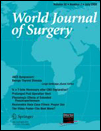Laparoscopic Sleeve Gastrectomy: Standardized Technique of a Potential Stand-alone Bariatric Procedure in Morbidly Obese Patients
Electronic supplementary material: The online version of this article (doi:10.1007/s00268-008-9548-2) contains supplementary material, which is available to authorized users.
Abstract
Background
The aim of this study was to define a standardized technique for laparoscopic sleeve gastrectomy in the morbidly obese patient.
Methods
There are several surgical options for the morbidy obese patient. In general, there are the restrictive procedures [e.g., laparoscopic adjustable gastric banding (LAGB)] and the malabsorptive procedures [e.g. laparoscopic Roux-en-Y gastric bypass (LRYGBP)]. Those techniques are already standardized. The laparoscopic sleeve gastrectomy (LSG) seems to have some advantages over both procedures, but it is not standardized yet, and so there can be no comparison between the different techniques. In our center we have standardized the LSG technique with respect to abdominal access and narrowness of the gastric sleeve. After dissection of the greater omentum and the short gastric vessels, the greater curvature is resected along a 34-Fr gastric tube using the Endo-GIA. The remaining gastric sleeve has a volume of about 100 ml.
Results
The standardized LSG procedure is presented step by step. A comparison of operative data and early outcome with a matched group of patients with adjustable gastric banding showed no difference between the two techniques with respect to operating time, surgical complications, and weight loss 6 months after surgery.
Conclusion
With our standardized LSG technique it is possible to evaluate the positive aspects of the LSG compared with other standardized bariatric procedures like LAGB or LRYGBP.




